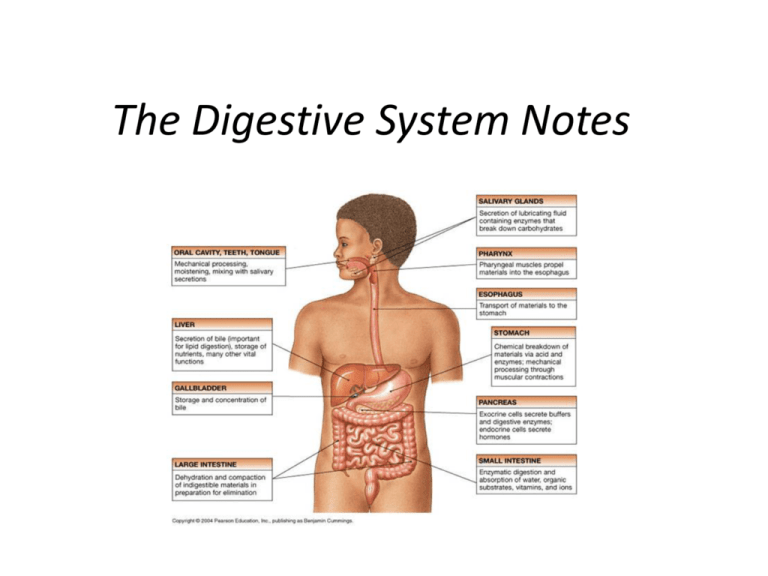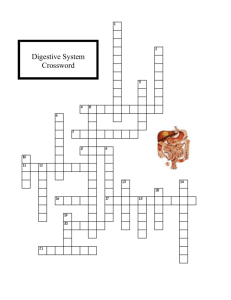The Digestive System Notes
advertisement

The Digestive System Notes Digestive System • Purpose: to break down the food we eat into nutrients so the body can use the nutrients to build and nourish cells and provide energy • digestion: the process of breaking down food into a form the body can use • Nutrients: substances in food the body needs to work properly Digestive System • Digestion begins in your mouth. • Before you begin eating when you see, smell or think about food saliva begins to form in your mouth. • Salivary glands under the tongue and in your cheeks produce saliva to moisten food as it is chewed. Salivary glands also secrete enzymes which break down starches in the mouth. Esophagus(Oesophagus) • Muscular tube(10 inches long) that moves food to your stomach through muscular contractions called peristalsis. When you swallow a special flap called the epiglottis closes so food does not go down your windpipe. Stomach Your stomach mixes, breaks down, and churns food with its strong muscular walls. Gastric juice from the stomach walls helps break down the food and helps kill bacteria from the food. Small Intestine The small intestine is located beneath your stomach. An adult’s small intestine is 22 feet long stretched out. Your food may spend as long as 4 hours in the small intestine. The small intestines breaks down the food mixture even more so your body can absorb all the nutrients-vitamins, minerals, carbohydrates, proteins, and fats. The villi in your small intestine absorb the nutrients and carry them to the bloodstream Liver and Gall Bladder • The liver produces bile. The nutrient rich blood from the small intestines goes to the liver for processing. The liver filters out harmful substances or waste. The liver sends nutrients to other parts of the body and keeps some for storage • The gall bladder stores the bile(produced by the liver). The gall bladder sends bile to the small intestines to help absorb fats into the blood stream Pancreas • The pancreas also aids digestion in the small intestines by secreting enzymes into the small intestine for starch and protein digestion. Large Intestine • The large intestine is wider than the small intestine and not as long.(5 feet stretched out) • Once the most of the nutrients have been absorbed in the small intestine the left over food mixture (which is mostly waste) goes to the large intestine. • As this mixture passes through the large intestine(colon) water and some minerals are absorbed into the blood. Any solid waste left over is pushed in the rectum until it leaves your body







